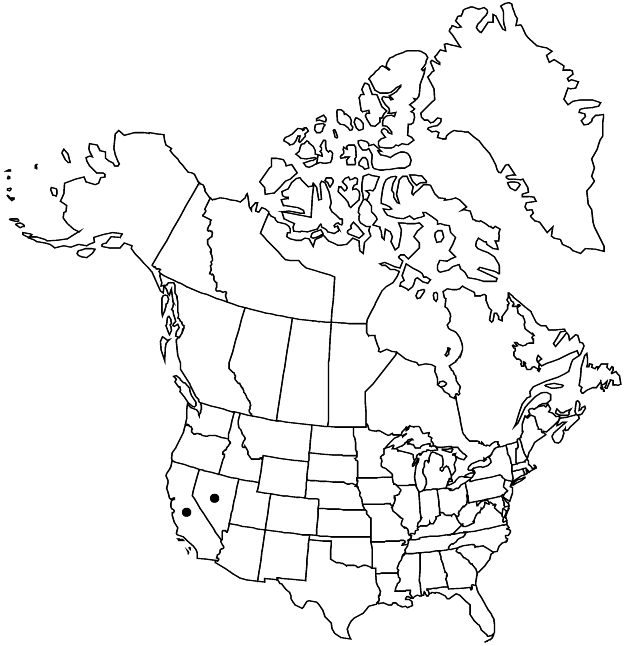Difference between revisions of "Eriogonum contiguum"
Phytologia 23: 175. 1972.
FNA>Volume Importer |
FNA>Volume Importer |
(No difference)
| |
Revision as of 22:37, 16 December 2019
Herbs, spreading to erect, annual, (0.3–)0.5–3 dm, glabrous and sparsely glandular, green or reddish green. Stems: caudex absent; aerial flowering stems erect, solid, not fistulose, 0.1–0.5 dm, glabrous, glandular proximally. Leaves basal; petiole 0.4–1.5 cm, hirsute; blade oblong to round, (0.3–)0.5–1(–1.4) × (0.3–)0.5–1(–1.4) cm, hirsute and greenish to yellowish on both surfaces, margins plane. Inflorescences cymose, dense, spreading, (2–)5–18 × 2–15 cm; branches not fistulose, glabrous except glandular near proximal nodes; bracts 3, scalelike, 0.5–1.5 × 0.3–1 mm. Peduncles mostly erect, straight or slightly curved, capillary, 0.3–1.2(–2) cm, glabrous, glandular proximally. Involucres turbinate, 1–1.3 × 0.6–1 mm, glabrous; teeth (4–)5, erect, 0.2–0.4 mm. Flowers 1–2.5 mm; perianth golden yellow to reddish, densely short-hirsute with coarse curved hairs; tepals monomorphic, lanceolate; stamens exserted, 1–2.5 mm; filaments sparsely pubescent proximally. Achenes light brown, lenticular to 3-gonous, 1.5–1.8(–2) mm, glabrous.
Phenology: Flowering Apr–Jun.
Habitat: Sandy to gravelly flats and slopes, saltbush, creosote bush, and mesquite communities
Elevation: -20-900 m
Discussion
Of conservation concern.
Eriogonum contiguum is confined to the greater Death Valley region in Inyo County, California, and southern Nye County, Nevada.
Selected References
None.
